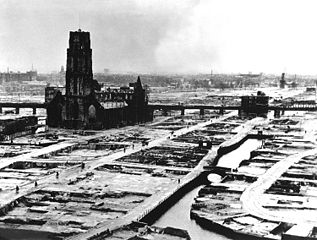I was thinking about this question I just asked, and I wonder whether the potential destruction of such an iconic building is even a realistic fear.
Has there been any incident of deliberate destruction of an iconic building (i.e. it's kind of world-heritage type structure) in an official war between nation A and nation B? What I mean is, during a war between nation A and nation B, nation A is invading / bombing nation B, and deliberately destroys a famous building of nation B? Does this still happen in the 20th century and later? If yes, then how does the attacking nation justify such acts?
Note that this does not include terrorist organizations or internal destruction for propaganda purposes. So incidences like destruction of this Russian cathedral, Buddhist statues, and Nimrud are out.
EDIT. And to make it more clear, let's exclude the destruction of iconic buildings/monuments when there exists a pure military reason. (I mean an enemy using these building for military purposes, like armed people hiding in a temple). And let us exclude "collateral damage", when there was no intention to destroy an iconic building. So that Caesar's burning of the Alexandria library would not qualify. And the destruction of the Parthenon will not qualify. The examples will be less abundant and more interesting.


